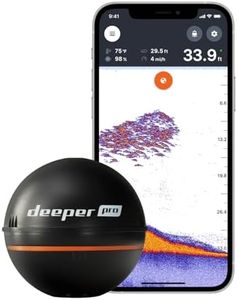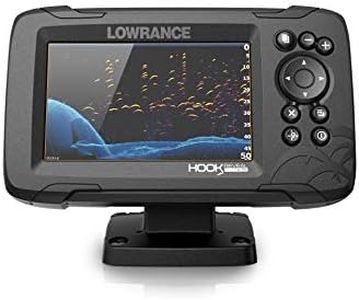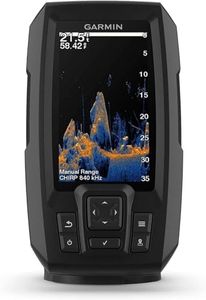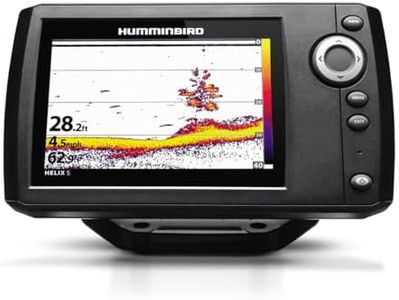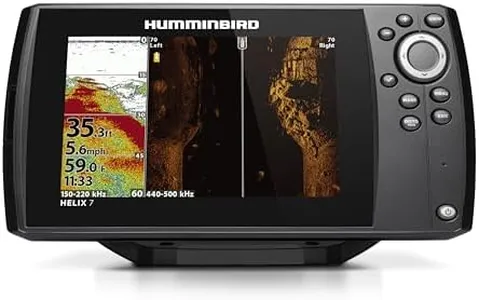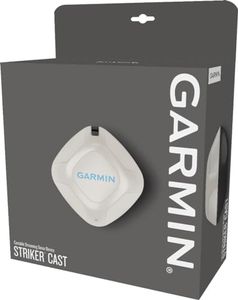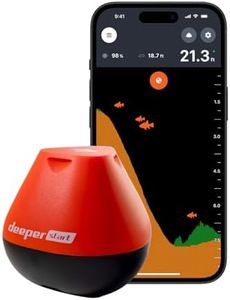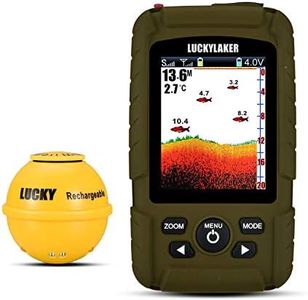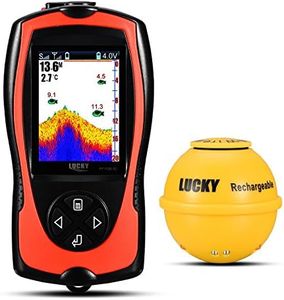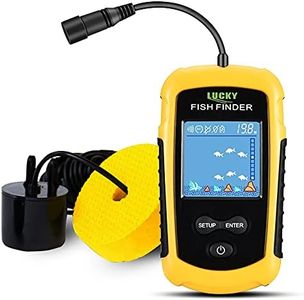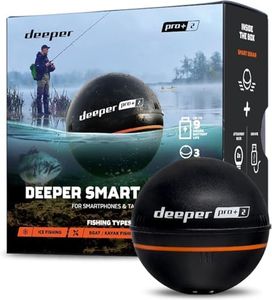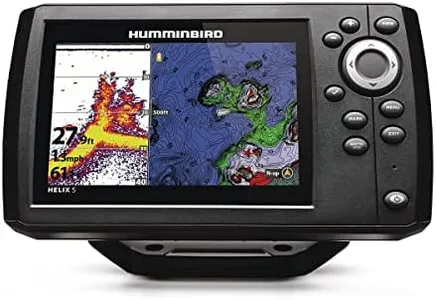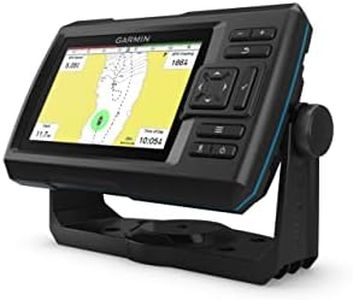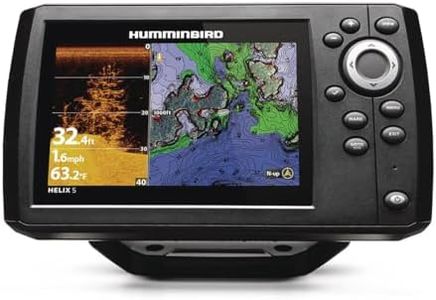We Use CookiesWe use cookies to enhance the security, performance,
functionality and for analytical and promotional activities. By continuing to browse this site you
are agreeing to our privacy policy
10 Best Portable Fish Finders
From leading brands and best sellers available on the web.Buying Guide for the Best Portable Fish Finders
When shopping for a portable fish finder, it's important to keep in mind that the right model will help you locate fish faster and more accurately, making your fishing trips both productive and enjoyable. Start by thinking about where and how you fish most often—shore, boat, ice, kayak, or all of the above. The best fish finder for you is the one that meets your typical fishing environment and tech comfort level. Don't worry if you're new to these devices; with a little understanding of the key features, picking the right one becomes much easier.Transducer Type and FrequencyThe transducer is the part of the fish finder that sends out sonar waves and receives the echoes, showing you what's below the water. The frequency determines how deep and how clearly you can see. Higher frequencies (like 200kHz and above) give you sharper images but work better in shallow water. Lower frequencies (like 50kHz) go deeper, making them ideal for deep lakes or the sea, but with less detail. If you fish mostly in shallow freshwater, a higher frequency transducer makes sense. If you want to venture into deeper waters, consider a model with lower frequency capability or multiple frequencies for versatility.
Display Size and ResolutionThe display is where you see all the information about what's happening under your boat or from the shore. A bigger and higher-resolution screen means you can see more detail and it's easier to read, especially in bright sunlight. Small displays might be harder to interpret, but they're more compact. Choose a larger, clearer display if you value detail and readability, especially if your eyesight isn't perfect, or if you fish in bright conditions where glare can be an issue.
Portability and Mounting OptionsPortability means how easy it is to carry and set up the fish finder. Some have all-in-one designs that fit in your pocket, while others come with separate parts like cables and mounting brackets. If you move between different fishing spots, from boat to shore to kayak, a more compact, portable model is usually best. Look for options with easy-to-use mounts or devices that can float or attach to your fishing line if you need maximum flexibility.
Power Source and Battery LifePortable fish finders run on various power sources—some use AA or AAA batteries, while others have built-in rechargeable batteries. Longer battery life means less worry about the device dying before your day is done. If you fish for long stretches or are away from power for hours, look for models known for lasting battery life, or those that use common batteries you can easily swap out in the field.
Depth CapabilityDepth capability indicates how deep the fish finder can effectively scan below the surface. Some are made for shallow water and only reach about 100-200 feet, while others can read several hundred feet down. Think about your typical fishing grounds—if you fish rivers, ponds, or shallow lakes, regular depth capability is enough. If you're often in deeper lakes or coastal waters, choose a device that can reach greater depths so you don't miss any underwater activity.
Connectivity FeaturesSome portable fish finders can connect to your smartphone or tablet via Bluetooth or Wi-Fi, letting you use your device as the display and even save maps or mark favorite fishing spots. These features are handy if you like using technology or want to track your fishing trips, but aren't necessary for everyone. Think about whether you want this integration, or if a stand-alone, simple device is more your style.
Waterproof RatingSince fishing environments are wet by nature, waterproofing ensures your device can handle rain, splashes, or even falling briefly in the water. Look for models that are at least water-resistant if not fully waterproof, especially if you fish from a kayak or in rough conditions. More robust waterproofing is essential if there's a bigger risk of submersion.
